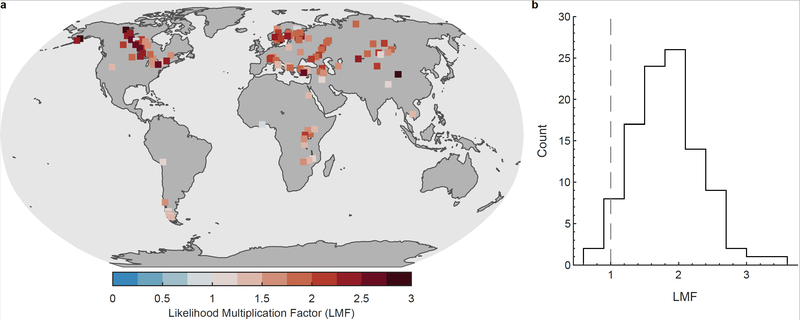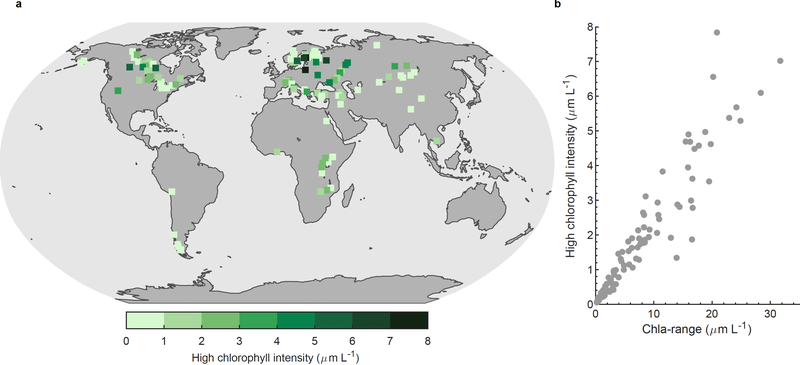2 de diciembre de 2021
Simultaneous extreme events more likely in Lakes - study
Global satellite study shows lake heatwaves and phytoplankton blooms occur together more often than expected
More frequent and severe extreme events is a consequence of human induced climate change, raising the possibility of multiple events occurring simultaneously and exacerbating the potential impacts.
A new study, led by recent ESA Research fellow, Iestyn Woolway, assessed the global impacts of such extreme events on lake ecosystems, that occur in isolation or in combination.
Specifically the study, published in Environmental Research Letters, focussed on the occurrence of lake heatwaves and high phytoplankton biomass. Lake heatwaves can expose aquatic organisms to lethal conditions and mass mortality, but when combined with reduced oxygen levels and water quality during phytoplankton blooms the impacts can be more severe.
To investigate the occurrence of such compound extreme events, the researchers examined 104 lakes distributed globally using satellite observations of lake surface temperature drawn from the Global Observatory of Lake responses to environmental Change (GloboLakes) and lake surface chlorophyll-a levels from ESA’s Globcolour project.


Study findings
- the intensity of lake heatwaves and high chlorophyll-a extremes differ across lakes and are influenced primarily by the annual range in surface water temperature and chlorophyll-a concentration. The intensity of lake heatwaves was found to be even greater in smaller lakes and in those that are shallow and experience cooler average temperatures.
- Intuitively, lakes that experience the most intense heatwaves and the most intense chlorophyll extreme events, also experience the most intense ‘compound’ events. Importantly, however, for 88 per cent of the lakes studied, the simultaneous incidence of both extremes was found to occur statistically more often than each type of extreme occurring alone.
The authors anticipate that extreme events, when they coincide, have more severe impacts on lake ecosystems than those previously reported due to the occurrence of univariate extremes.
The result are discussed in the journal Environmental Research Letters - https://doi.org/10.1088/1748-9326/ac3d5a.

